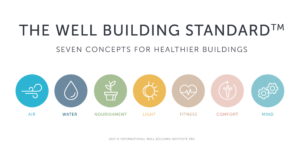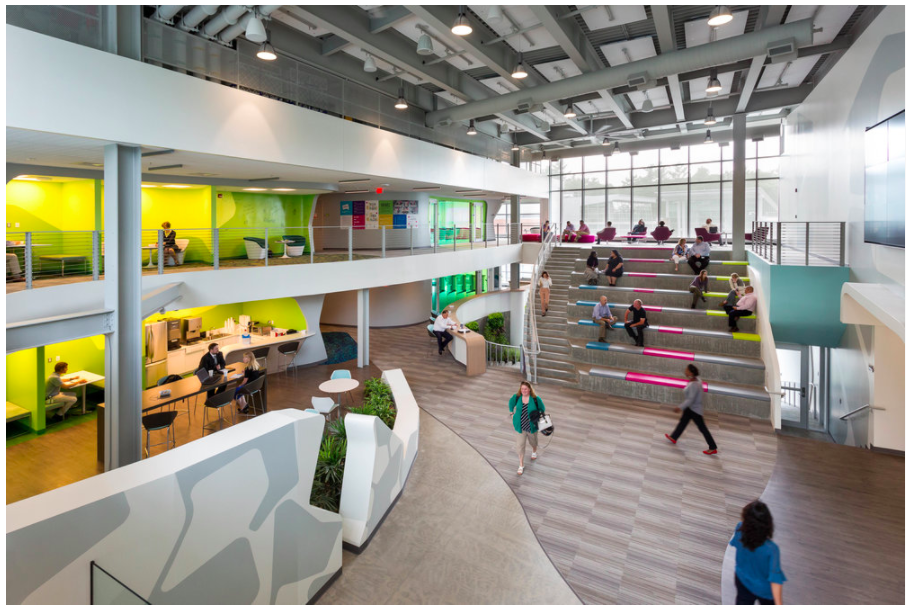The WELL Theory
The International WELL Building Institue (IBWI) launched the WELL Building Standard in 2015. The WELL mission is to promote human health within the built environment. We spend ninety percent of our time indoors and health conditions are related to environmental exposure. Health research has begun to evaluate indoor conditions as they affect human health. WELL is founded on this relationship between buildings and their occupants.WELL is closely related to green building certifications. The Green Building Certification Institue, which administers LEED certification, is a third-party certifier for WELL. However, WELL’s commitment to the betterment of human health and wellbeing sets the WELL standard apart.
The WELL certification evaluates seven environmental conditions, of the built environment, known as Concepts. These concepts are air, water, nourishment, light, fitness, comfort, and mind. The WELL Building Standard “lays out optimal conditions for each [Concept] in an effort to encourage a holistic, integrated approach to sustainability,” according to the Green Building Alliance. Each Concept and its conditions aim to improve specific health areas such as focus, energy, sleep, stress, longevity, development, beauty, alignment and more.
Where does WELL fit in?
Much like the LEED green building certification, WELL uses a stratified certification system. There are two versions of certification: The WELL Pilot Standard and the WELL Building Standard. Each of these categories is then divided into silver, gold, and platinum.In order to achieve silver certification, a building must fulfill preconditions for each of the seven concepts. To achieve gold or platinum, a building must meet a certain percentage of optimizations for each certification respectively. No certification is considered until all preconditions are met.
Part of the WELL mission is to encourage behavior change. Through WELL, health and wellbeing are incorporated into infrastructure. This building standard requires a commitment from the occupants to ascribe to healthier work routines.
The WELL pamphlet even explains how building conditions directly affect the human body. This information details how WELL standards counter detrimental health effects from indoor building conditions.
Additionally, each of the Concepts and their conditions is fully described in the WELL addenda. The abundance of information available for WELL certification helps to educate people on what constitutes a healthy building. Often, knowledge is the foundation of change.
Ultimately, the IWBI believes “that buildings should be developed with people’s health and wellness at the center of design.”
WELL also stands out amongst other green building certifications because of certification renewals. Every three years buildings must be reevaluated for WELL. This ensures that buildings still have a positive effect on health. Otherwise, it is common for buildings to deteriorate and begin to negatively impact health.
Furthermore, WELL certification can be applied to a variety of building types–multiple family residences, restaurants, or educational facilities.
WELL and the Built Environment
The WELL focus is on human health in the built environment. It incentivizes health and wellbeing over tax breaks. This sets WELL apart from the green building industry. In comparison to LEED, it seems that WELL does a better job at incentivizing behavior change. However, in focusing inward, WELL neglects the effect of buildings on the outdoor environment. Perhaps the administration of WELL certification by the GBI suggests that LEED and WELL are meant to be applied collaboratively.Written by Mollie Wodenshek for FutureAir
Resources
Knox, Nora, “What is WELL?”, USGBC.
“WELL Building Standard,” Green Building Alliance.
“WELL Building Standard: v1 with May 2016 addenda,” International WELL Building Institute.
Photos
Ellenzweig (Featured)
International WELL Building Institute (in text)

